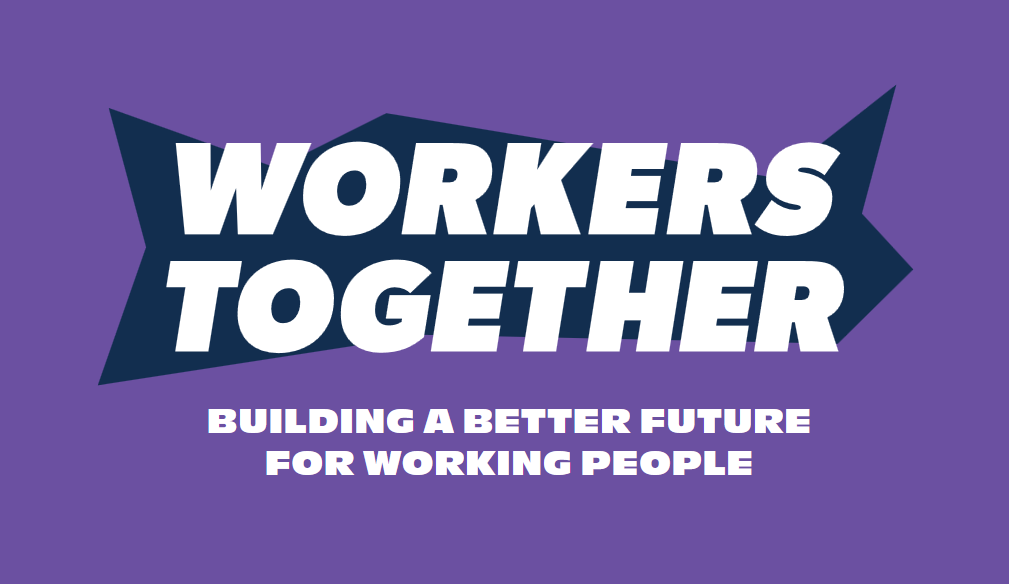Since at least the onset of the pandemic, establishment and bank economists have worried about lagging investment in Canadian businesses. Despite a swift economic recovery by international standards and, until recently, low interest rates and sizable government pandemic subsidies, the capitalist class seems reluctant to invest.
Insofar as lacklustre investment in new machinery and equipment and other technologies indicates poor prospects for workers’ jobs and wages, we ought to be concerned. The problem is that the most vocal critics of the “investment gap” in Canada are calling for more of the same failed trickle-down economics: cutting environmental and other regulations, slashing government spending and income supports, and further deregulating the labour market.
Contrary to these voices from the right, we on the left should recognize that we can’t wait around for the capitalist class to decide vital investments in things like climate mitigation and clean energy are profitable. We need publicly-led investment and planning to meet the pressing needs of workers and the climate.
The first step, however, is to know your enemy’s argument.
Last month, the right-wing think tank, the C.D. Howe Institute, released a report warning about the consequences of weak business investment in Canada. The study’s authors, William B.P Robson and Mawakina Bafale, caution that “weak business investment threatens Canadian prosperity.”
Business investment is measured as the value of capital stock per worker and typically includes things like non-residential structures and infrastructure, machinery and equipment, and intellectual property products, such as software. On a per worker basis, business investment is both falling over time and lagging compared to peer countries of similar national income levels. This means that productivity growth is weak in Canada and is getting weaker relative to other rich countries. Weak investment matters, arguably, because higher capital intensity tends to translate into higher productivity and therefore higher wages for workers. Essentially, the more machines and tools improve the productivity of labour, the more able workers are to make wage gains.
The authors of the report claim that business investment has been especially weak since 2015, particularly in areas such as machinery and equipment and intellectual property products. Meanwhile, other business analysts warn that declining investment and productivity occurring at the same time as nominal wages are increasing could spell trouble ahead and potentially be “reflective of a stagflationary environment.”
Unsurprisingly, blame is also placed on government spending in the forms of public sector employee compensation and income transfer payments, which Robson and Bafale argue are raising the level of consumption and drawing away resources from investment. In other words, over-generous income supports raise the level of demand without incentivizing the investment necessary to increase the supply of goods and services. This, so the argument goes, is an indirect contributor to current inflation.
Tiff Macklem, governor of the Bank of Canada, has been sounding a similar alarm at the same time as the Bank raises interest rates more quickly than it has since the mid-1990s. Greater investment and productivity growth would mean less dependence on interest rate hikes to tame inflation, according to Macklem. Despite his public tiff with Tiff, federal Conservative Party candidate Pierre Poilievre continues to prattle on, making a comparable point about needing to cut regulations to boost investment and output instead of “printing more money” (i.e. increasing demand).
However, repeating the same argument ad nauseam doesn’t make it true, whether you’re Poilievre or a neoclassical economist at a right-wing policy outfit.
Right-wing politicians and neoclassical economists alike can be quite adept at presenting dire warnings about lagging business investment as in fact concern about workers’ livelihoods. Robson and Bafale, for instance, write that, “Canada’s workers need changes of direction, particularly at the federal level, to get more of the tools they need to thrive and compete.”
As they are correct to point out, capital stock per available worker correlates strongly with GDP per worker, and Canada is noticeably lagging its peers (aside from New Zealand). However, simply because their diagnosis of the problem is relatively sound doesn’t mean their policy prescriptions would in any way benefit workers.
The first thing to note is that GDP per worker doesn’t tell us anything about how national income is actually distributed. Just because a country has high GDP per worker doesn’t mean that every worker there is taking home a large income — the United States is a case in point. Outlandish income inequality (putting aside inequality in wealth) negates America's better performance on this measure. Income distribution and equality matter a great deal.
Second, like many economists, they have cause and effect backwards when it comes to productivity and wages. According to these folks, growing wage costs are eating away at potential productivity gains. Yet as new research from economists Claudia Fontanari and Antonella Palumbo demonstrates, wage stagnation, and the suite of labour market deregulatory policies that helped produce it, has contributed to low levels of investment and productivity growth. Put simply, if there’s lots of cheap labour around, firms opt not to invest in productivity-enhancing equipment. If anything, policymakers should encourage wage growth, particularly through greater unionization and access to collective bargaining.
Perhaps more importantly, most of the countries with which Robson and Bafale compare Canada generally have higher taxes on profits and top income earners, as well as much more regulated labour markets, usually in the form of sectoral bargaining and labour standard setting arrangements. Finland, France, Sweden, Denmark and Belgium all outperform Canada on capital investment, yet all have more regulated labour markets. Most also have a greater share of the labour force working in the public sector. If employers in these European countries can manage to invest in the face of greater unionization and more regulation, what’s wrong with Canadian capitalists?
As is typically the case, the right understands weak business investment as an indication that corporations see little economic opportunity in Canada and are withholding capital in response to prohibitive regulations, punishing taxes and profligate government spending.
Nothing could be further from the truth.
For all the incessant whining about the lack of business confidence, companies who are sitting on hoards of cash continue to engage in record-setting share buybacks. Such buybacks reduce the number of shares in circulation, thus increasing both earnings-per-share and executive compensation, which is often tied to share value. Despite being almost routine corporate practice at this point, share repurchases are widely criticized for increasing inequality, depressing wages and decreasing business investment. The economist William Lazonick, perhaps the fiercest and most well-known critic of share buybacks, has argued for years that they stifle innovation and investment and are, in effect, a form of stock manipulation that was illegal several decades ago.
Instead of investing in new production or increasing employee compensation, publicly traded companies spent $281 billion USD in share buybacks in Q1 of 2022 and nearly $1 trillion USD in the previous 12 months. Supply-side tax breaks sold to the public as necessary to increase investment routinely produce even greater levels of such stock price juicing. For example, after then-United States President Donald Trump and a Republican Congress passed a massive tax cut for corporations and the wealthy in 2017, stock buybacks soared.
Efforts to curb or eliminate this detrimental stock manipulation have made little headway either. The recently passed Inflation Reduction Act in the U.S. includes a 1 per cent tax on stock buybacks, a rate so low that it will likely have no effect on the practice. Rather, as David Dayen at the American Prospect points out, the new excise tax may actually end up further embedding this stock scam and making the government dependent on the revenue it generates.
Canadian corporations, financial and non-financial, as well now routinely announce huge buyback programs of their own to drive their stock prices up and inflate executive compensation. For example, oil and gas corporations have been doing exactly this now that energy prices have surged and they have piles of cash on hand. Of course, this is also taking place during consecutive quarters of record-breaking corporate profits — excessive earnings that should rightly be understood as a key driver of current inflation.
All of this stock manipulation and corporate profiteering begs the question: Are we expected to believe that corporations flush with cash are somehow suffering from a lack of capital? Furthermore, why would we cut spending on support and services for the public, or remove regulations meant to protect workers, on the off chance that doing so might encourage investment?
Most importantly, why on earth do we allow such huge concentrations of capital to remain in private hands when we face existential threats such as climate change?
We simply can’t afford to wait for corporations to find it profitable to invest in the infrastructure and goods we need to make life prosperous for all.







